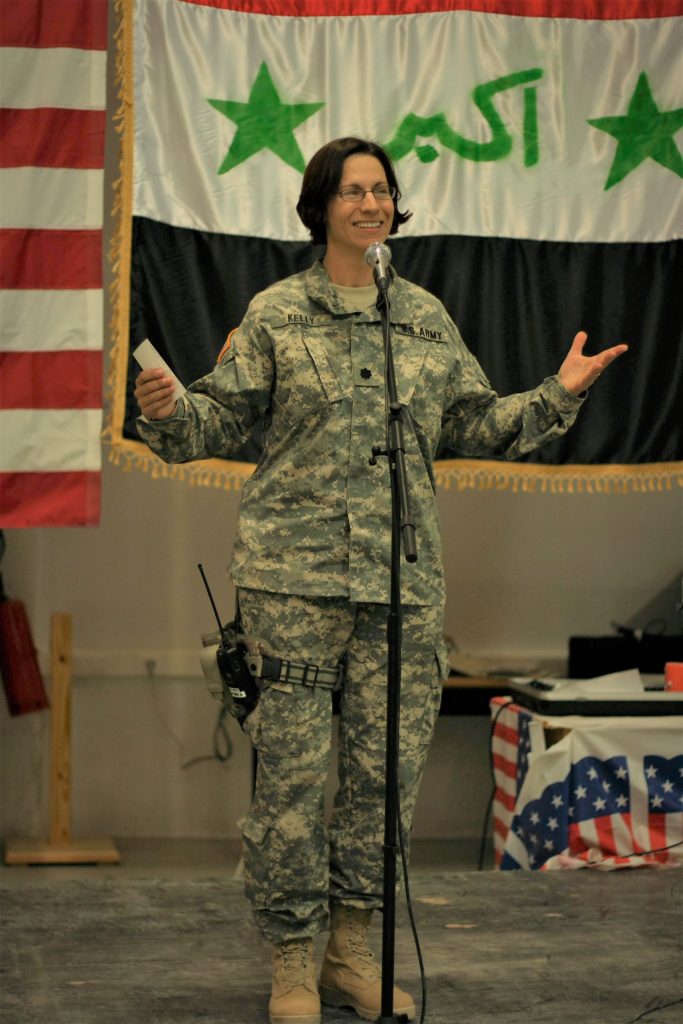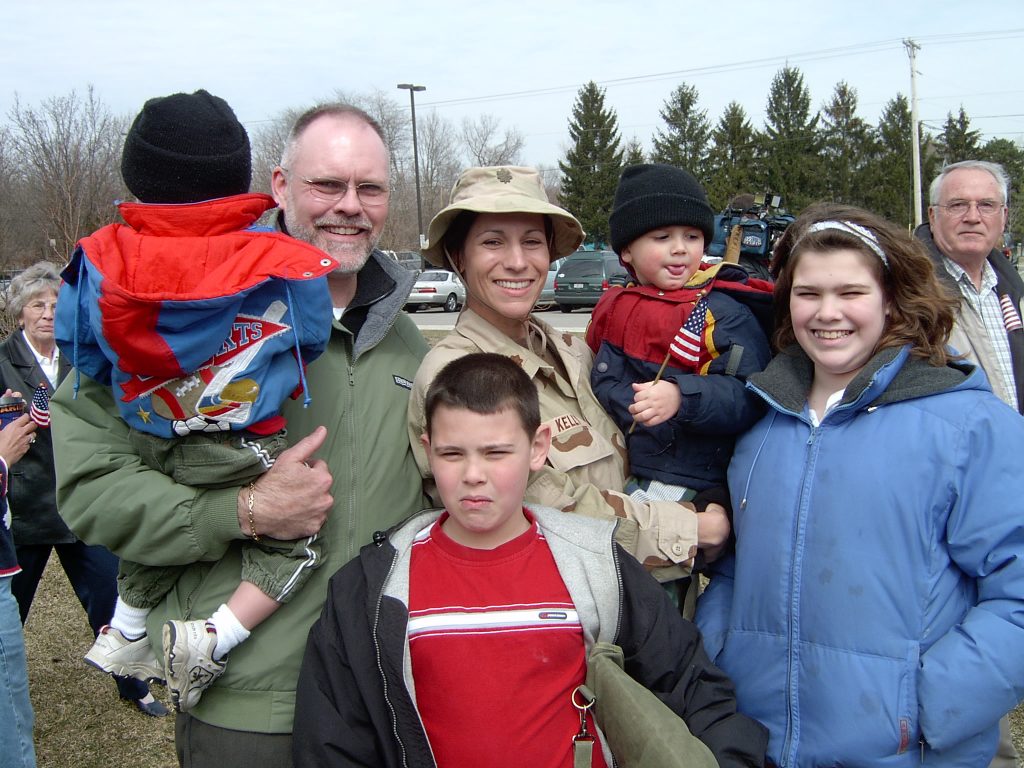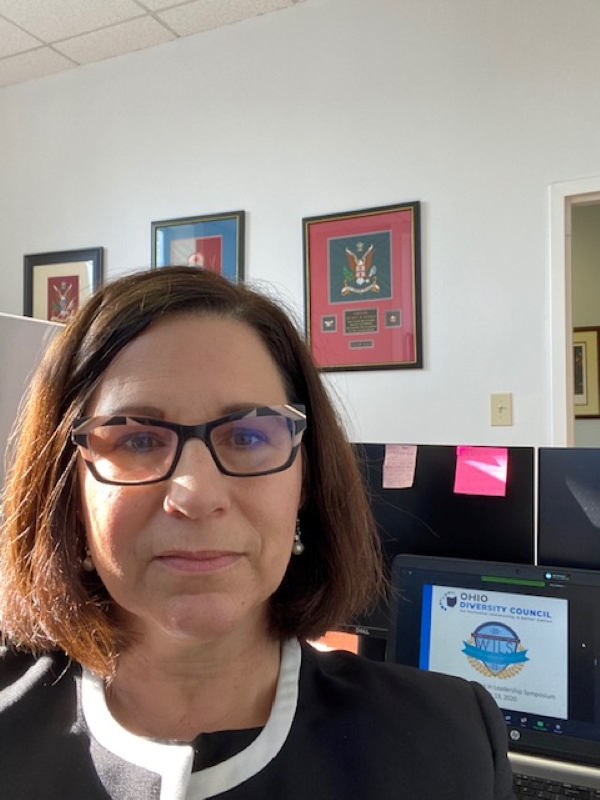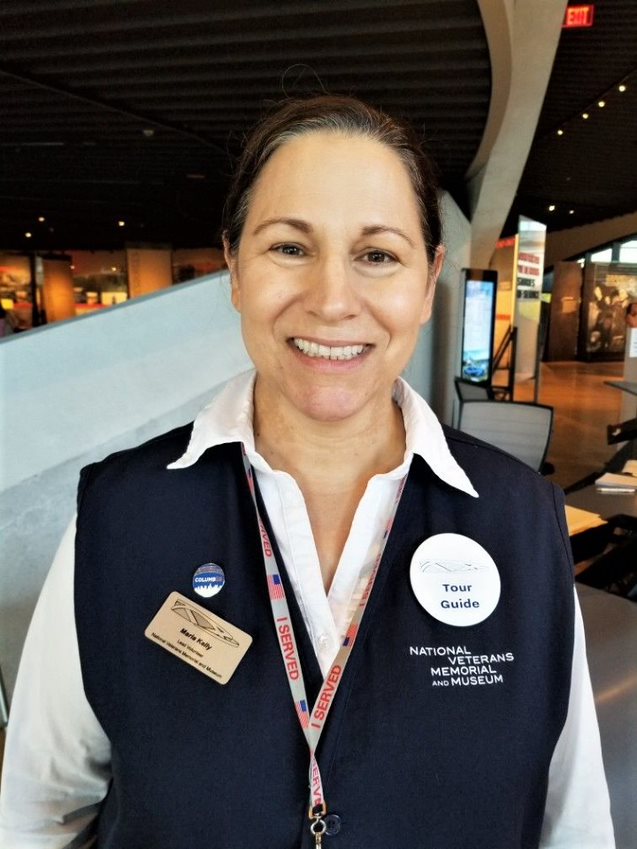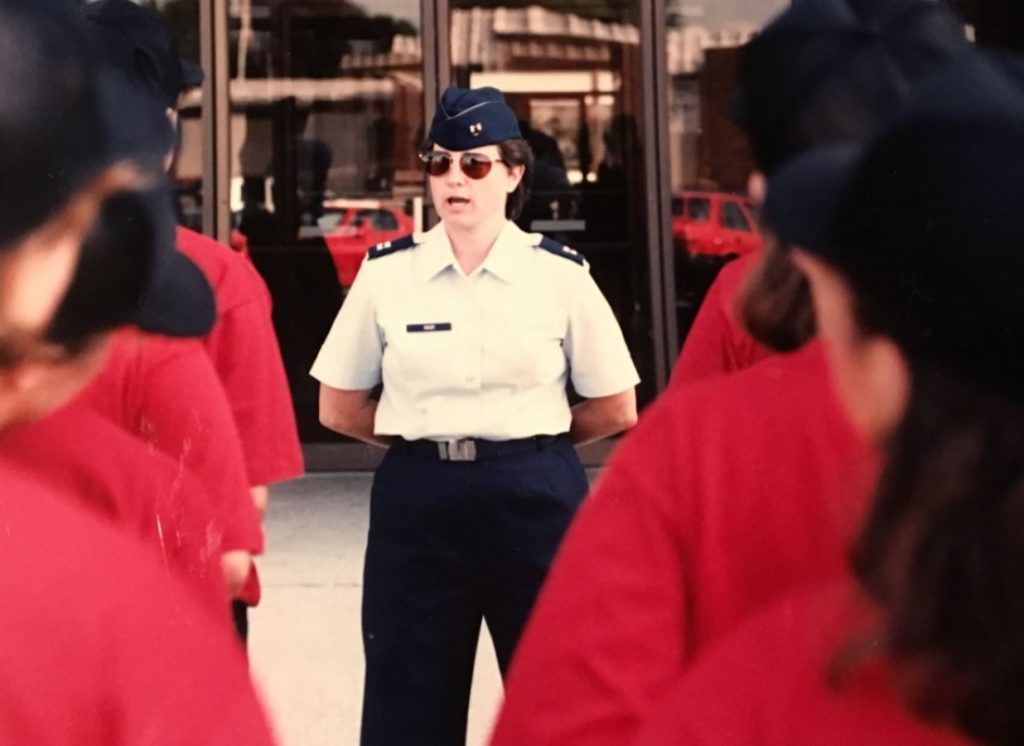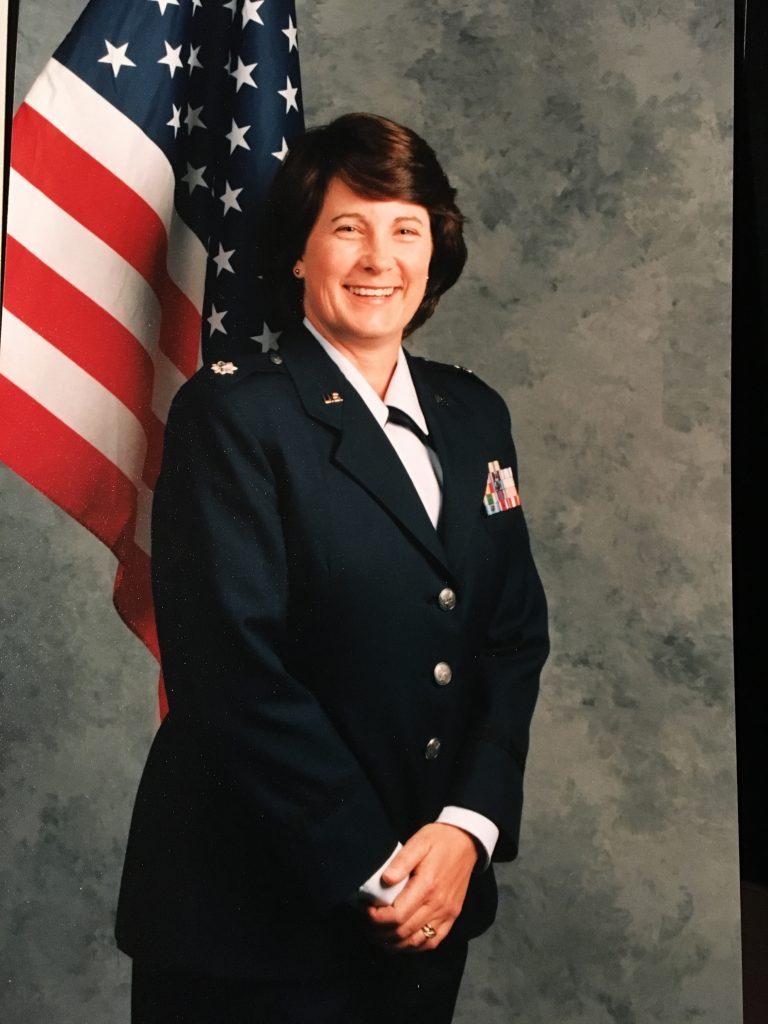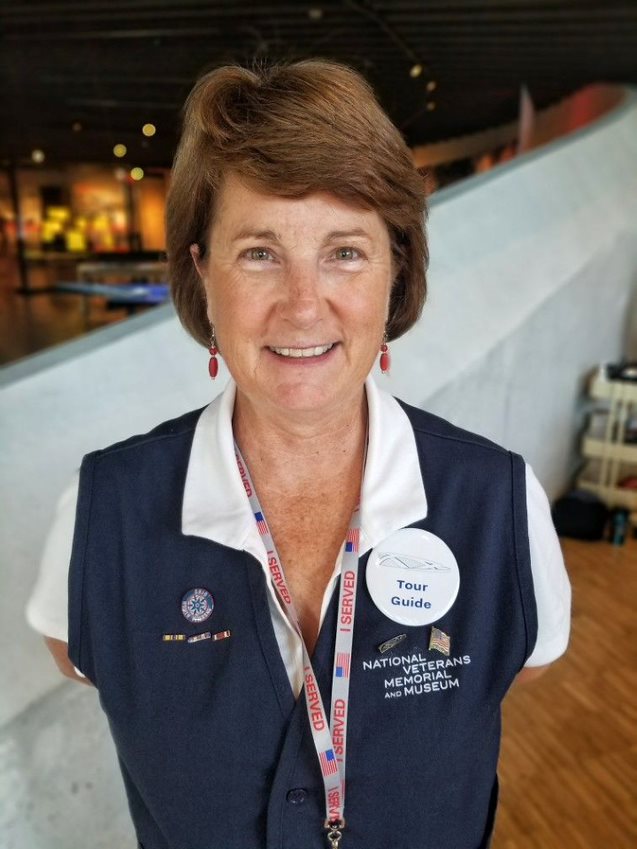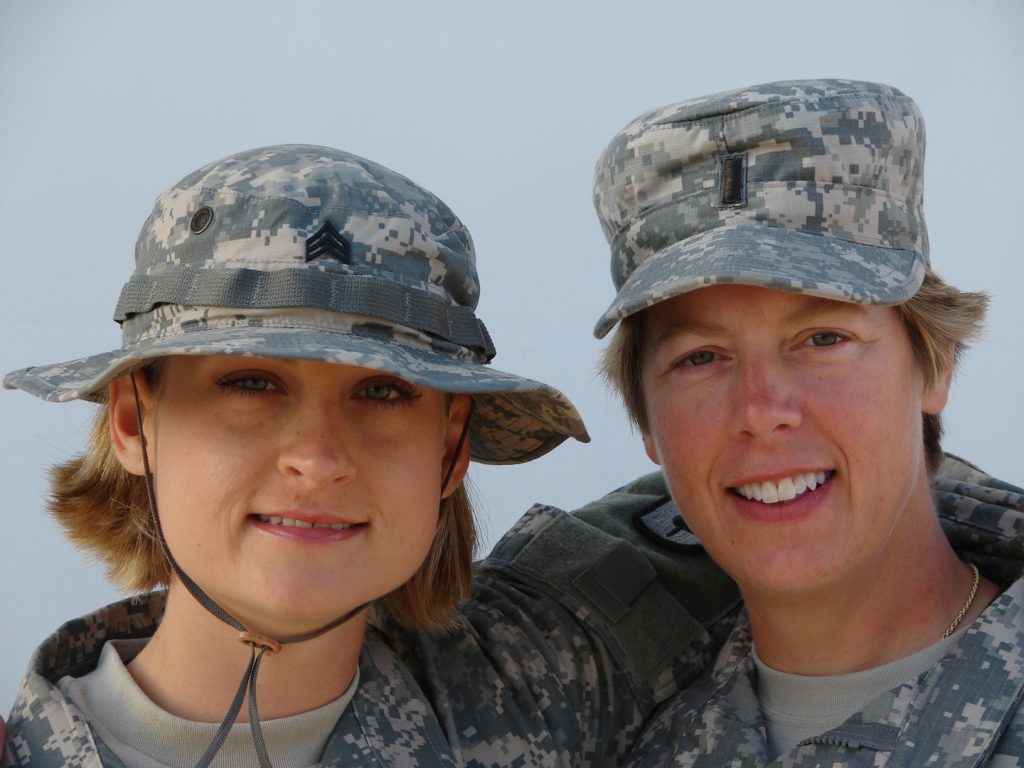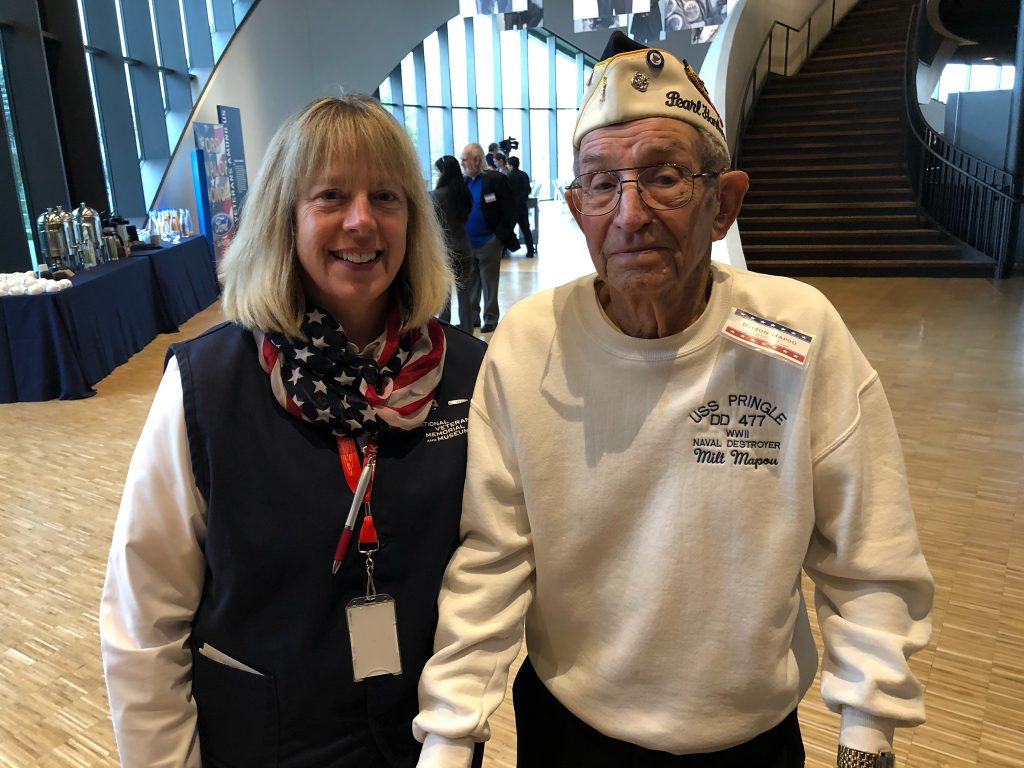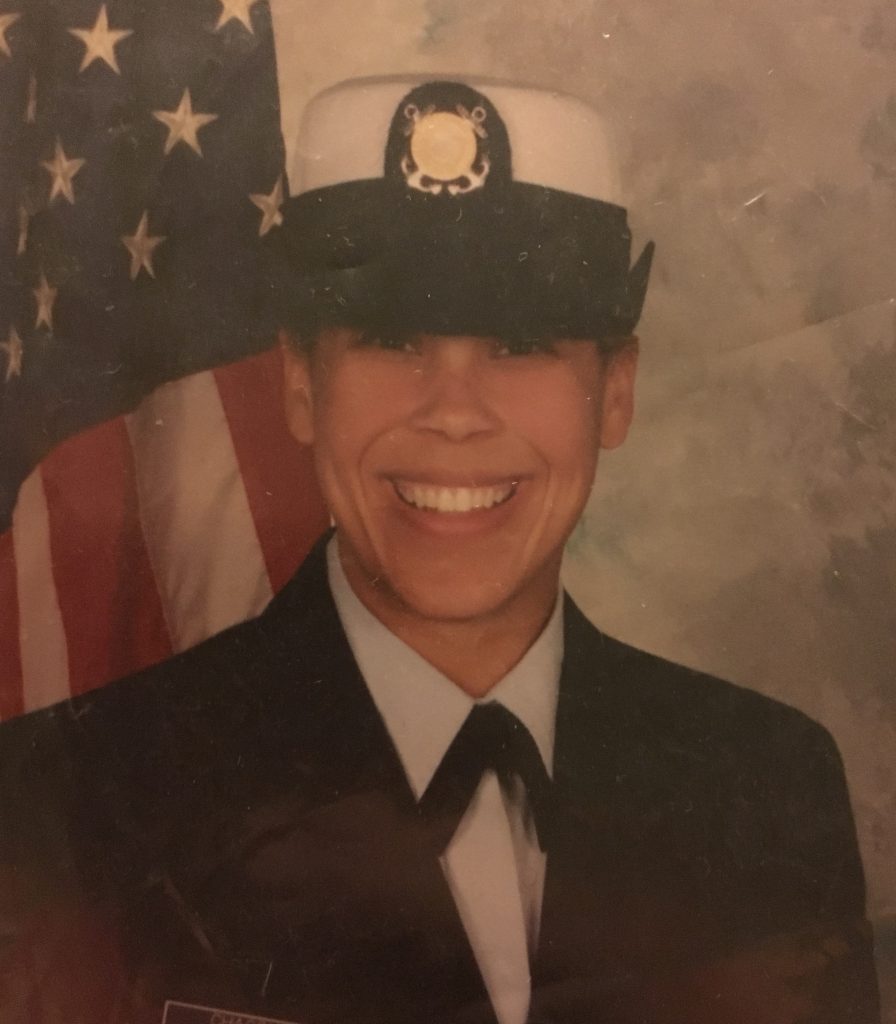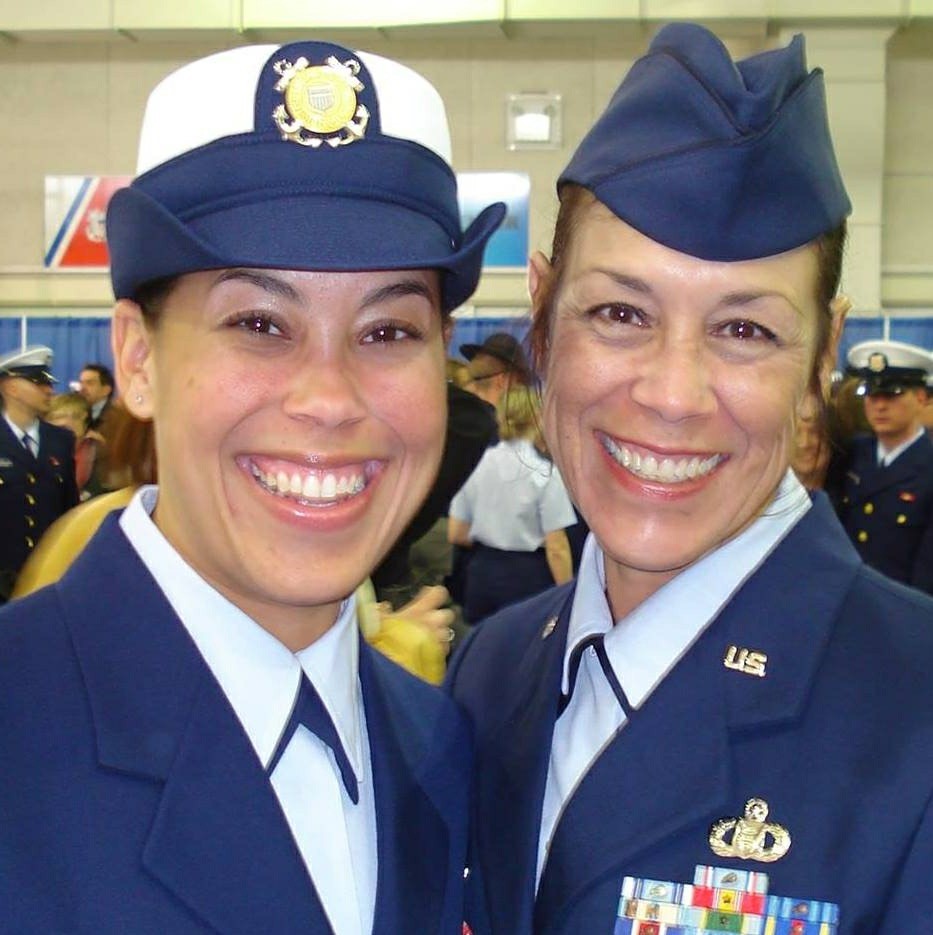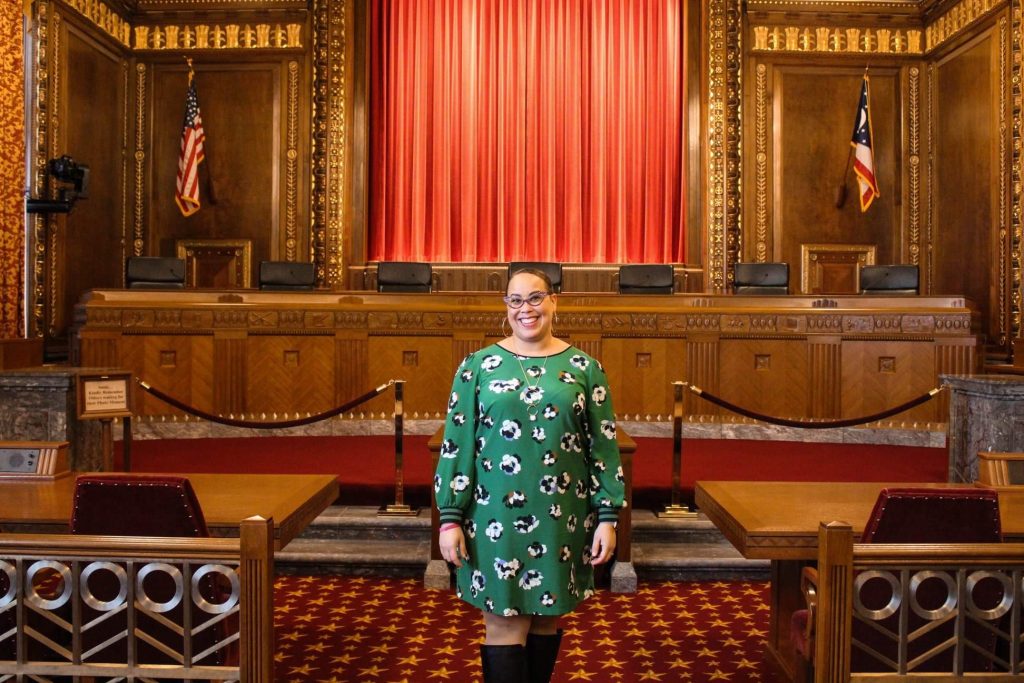
Women’s History Month
This month, we are sharing the powerful stories of our nation’s women Veterans – their challenges, victories and achievements. We will connect you each week to new personal narratives of women who continue to inspire us. Be sure to check back for new videos, reading suggestions, virtual content and online programming.
Women Who Inspire – An Insider’s View
In the final week of Women’s History Month, we honor the women of the Vietnam War. Our Museum Educator, Samantha Brooks, shares the story of Lynda Van Devanter, a nurse who served during the Vietnam War. Lynda suffered from depression after she returned home, fought to overcome her feelings of hopelessness and built a community for other women Veterans. Learn more at Women in Vietnam: The Story of Lynda Van Devanter.
We The People: Portraits of Veterans in America by watercolor artist Mary Whyte depicts 16 women Veterans from Alabama, Alaska, Connecticut, Georgia, Indiana, Louisiana, Maine, Nebraska, Nevada, Ohio, South Carolina, South Dakota, Texas, Utah, Virginia, and Washington. Each woman contributes to the fabric of our nation in her own unique way. Stacey Queen, our Public Programs Manager, shares more about this exhibition on view through April 11. Learn more about our exciting final weekend of events at We The People: Portraits of Veterans in America.
During Women’s History Month, we honor the women of the Veterans Portrait Project featured in our Great Hall. Our Museum Educator, Taylor Shaw, shares the story of U.S. Marine Corps Veteran Marilyn “Mickey” Newhouse Cogswell. Read more in our latest blog, Veterans Portrait Project: Marilyn Cogswell.
Our Museum Educator, Taylor Shaw, shares the story of Dorothy J. Baroch, who joined the Women’s Naval Reserves, also known as the Women Accepted for Volunteer Emergency Service, or WAVES, on August 5, 1943. WAVES members were to replace men on the Homefront who had shore duty, freeing them up to serve on combat ships at sea or the frontlines, as the law expressly forbid a woman’s assignment to a Navy ship or combat aircraft. Connect with her story in our latest blog, Dorothy Baroch: A World War II Pioneer.
During the entire month of March, the National Veterans Memorial and Museum honors those women who looked beyond their roles as mother, daughter, wife, partner and sister and took up the call to serve our nation. These women took on challenges with fortitude and resilience and never gave up. Hear more from Stacey Queen, Public Programs Manager, in our latest blog, Celebrating Women’s History Month.
Educational Resources
Popular Past Blog Posts
Reaching for the Stars: Pam Melroy’s Inspiring Story of Service
Military Spouse Appreciation Day
VEC 001 Women’s History Month Presentation
Women Who Inspire – Artist Spotlight
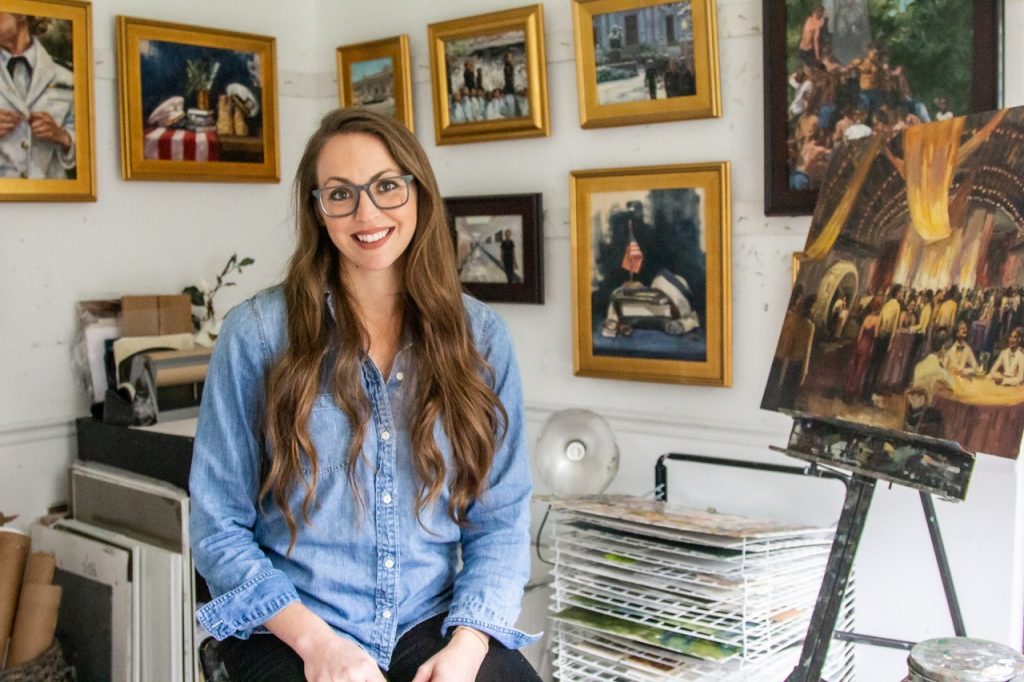
At the National Veterans Memorial and Museum, we are motivated and inspired by remarkable stories about women in military service – their dedication, perseverance, and countless contributions throughout history charge us with excitement as we share their narratives with you.
In celebration of Women’s History Month, we had the incredible opportunity to connect with Navy Veteran and artist, Kristin Cronic. Kristin’s time at the U.S. Naval Academy has inspired her to create a body of work which pays tribute to the longstanding traditions of life for students and young sailors at the renowned Annapolis institution. Read more in our Artist Spotlight: Meet Kristin Cronic.
Women Who Inspire – Staff Spotlight
Each week during Women’s History Month, we honor and celebrate the women Veterans within our museum and volunteer staff ranks. Their countless contributions and selfless acts of service inspire us daily.
Maria Kelly, U.S. Army and Ohio Army National Guard Veteran and Volunteer at the National Veterans Memorial and Museum
Q: Where were you stationed, what was your job?
A: I enlisted into the US Army when I was a senior in High School. I was stationed in Frankfurt, Germany, where I worked for a Maintenance Evaluation Team. I traveled with the team throughout the V Corps area inspecting publications accounts to ensure that the units had the appropriate technical and field manuals on hand for their assigned equipment. This was during the early – mid 1980s, the Cold War. While there were many tensions and escalations between the NATO Allies and the USSR, there were also many scares due to terrorist organizations such as the Red Army Faction, also known as the Baader-Meinhof gang. While there was a lot of tension during this time, I was young, and managed to travel on and off duty to enjoy a lot of what Europe had to offer. I traveled as much as I could because I thought I may never get to visit again. I planned to leave the Army after my three year tour. After leaving the service, I attended Ohio University where I enrolled in ROTC and enlisted in the Ohio Army National Guard. Once commissioned, I continued to serve in the National Guard. I had the opportunity to serve in numerous domestic and overseas operations until I retired in 2016.
Q: What does service mean to you?
A: Service is an opportunity we have to strengthen the legacy of those who sacrificed for our freedom. While I didn’t understand that when I enlisted, I certainly learned that lesson during my time in military service.
Q: What impact has service had on your life?
A: Service allowed me the opportunity to share my skills and talents and learn new skills and talents from others. Service puts me in an environment to meet the most amazing people in our country and around our world so that I can continue to grow and contribute to others.
Q: What is your favorite exhibit inside the museum?
A: The exhibit I identify with the most is in the “Transformations” alcove of the core exhibit. One of the main features is a wall with six photographs of service personnel in uniform. But when you move slightly to the right or left, the photos blur before becoming six photographs of the same person as a civilian. There is a quotation from Ben Snyder, A World War II veteran – “…….I wonder if you will find me changed.” Military service is life changing. When you leave the service it is not so easy as trading in your uniform for a suit or dress. I sometimes find myself feeling “stuck in the blur.” No longer a Soldier, but not feeling really like a civilian either. It’s difficult to describe with words, but I think the transformation of the photos – coupled with the blur – describe it well.
Kim Minor, U.S. Veteran and Volunteer at the National Veterans Memorial and Museum
Q: Where were you stationed, what was your job?
A: I was stationed at Rickenbacker Air National Guard Base in Columbus, Ohio from 1982-2008. Throughout my career, I held several positions which included Chief of Military Equal Opportunity, Inspector General, Executive Officer, and Personnel Squadron Commander.
Q: What does service mean to you?
A: For me, service means giving of oneself for others and for our country. Service means fighting for our democracy, for our way of life, and for American Ideals.
Q: What impact has service had on your life?
A: I was raised in a military family in a small Virginia town. I knew from an early age that I wanted to serve in the military, but at the time military schools were not an option for girls. As soon as I was old enough, I joined the Air National Guard. Military training was a significant and emotional event for me. Having grown up in small town, I was sheltered and influenced in many ways. The military taught me about other cultures, races, and ethnicities. It opened my eyes to my own biases and prejudices and made me face some hard truths about myself. It taught me to take accountability for my words and actions.
Service provides personal and professional opportunities to develop oneself and it has instilled in me the following values:
• Accountability
• Responsibility
• Confidence
• Commitment
• Self-discipline
• Self-respect
• Pride
Q: What is your favorite exhibit inside the museum?
A: I have a couple! The first is the “Taking the Oath” alcove because it gives me an opportunity to share how impactful the oath is for individuals. I also have an opportunity to share some of the differences between serving in the Air National Guard versus in the active duty Air Force because the ANG oath has the addition statements about the state and local governments. The other exhibit I really enjoy is the “Jobs” alcove because we talk about how any person can hold pretty much any job today. Women can fly and men can work as nurses! It also shows extracurricular opportunities like being in the military band.
Q: What advice would you give to other women starting out in their military career?
A: My advice to women wanting a career in the military would be to “be true to yourself.” Be honest, humble, and truthful. Go for the job or position you’re most interested in. Work hard and be prepared. You can do anything, be anything, and the sky is the limit!
Terri Swank, Ohio National Guard Veteran and Volunteer at the National Veterans Memorial and Museum
Picture (Left): Terri and her niece, Erin Hicks, in Kuwait in 2006 before they went into Iraq to separate locations.
Q: Where were you stationed, what was your job?
A: I was in the Ohio Army National Guard in the Columbus area for 36 years. I began as a Private and Medic in 1979, then worked my way up to Sergeant First Class (E-7). I applied for and was selected to the Interservice Physician Assistant Program, and I attended IPAP 2002-2004. I was commissioned as a 2LT at graduation in Sep 2004. I deployed to Iraq in 2006-07 and Afghanistan in 2011-12. I also deployed stateside for Hurricanes Katrina, Rita and Gustav, snow storm of April 1987, Southern Ohio Flood, as well as Humanitarian Missions to Honduras twice and El Salvador. I retired in 2015 as a Major.
Q: What does service mean to you?
A: For me, service is a family tradition and means giving of yourself to a bigger purpose. My great grandfather served in the Civil War, my grandfather served in WWI, two uncles served in WWII, and my dad served in the Navy.
Q: What impact has service had on your life?
A: Having served 36 years, the military had a huge impact on my life. I met so many people from all walks of life and learned they all have something to contribute, regardless of rank or education. The military also opened my eyes to how people live in other countries, such as my first trip to Honduras in 1982, where basics such as a home and shoes were a luxury in areas away from big cities. During the Hurricane Katrina mission, it was hot and humid with lots of mosquitoes, a bad stench, no electricity or showers initially, and we ate plenty of MRE’s. I would do it all again because to give up my creature comforts for the sake of helping those in need without homes, belonging, etc. was rewarding more than you can imagine.
Q: What is your favorite exhibit inside the museum?
A: I have a couple favorite exhibits. The first one resonates with me when Joshua Mantz tells his combat story, and the medic has to decide which soldier to treat. It’s raw, emotional and real in the medical field of combat. The second one is the Honor Flight shirt in the Service Continues alcove because I am a Guardian with Honor Flight Columbus. The exhibit I really love are all of the Veterans who come through the door at NVMM.
Q: What advice would you give to other women starting out in their military career?
A: My advice to other women starting out in the military is to take advantage of what it has to offer (such as education, opportunities, etc.) while performing your duties to the best of your ability. You will get out of it what you put into it. Don’t cheat yourself. Plus, your actions can positively or negatively impact the perception of women in the military. Choose wisely.
Angelina Vega, U.S. Coast Guard Veteran, and Legal Counsel for the National Veterans Memorial and Museum
Pictured here with her late mother: Master Sgt. Linda Vega, Ohio Air National Guard (Retired)
Q: Where were you stationed, what was your job?
A: San Francisco, CA. I was a Gunner’s Mate. I taught people how to shoot and oversaw two stations’ and one cutter’s weapons programs. I was a librarian for guns and ammo.
Q: What does service mean to you?
A: To me, service means helping others. I know that’s a very broad definition, but “service” can take many different shapes with many different focuses. When I was in the military, my focus was serving the United States as a member of the Coast Guard. Now, my focus is to support the NVMM as we honor, connect, inspire and educate people about the collective “Veteran experience.”
Q: What impact has service had on your life?
A: Service has had a strong impact in my life. I remember my mom taking me with her when she went to donate blood, volunteer and vote. I do not come from a wealthy family, and it was inspiring to see my mom serve others when she was able. I have always had a heart for service. A pleasant side effect of serving and helping others is that it makes me feel joyful.
Q: What is your favorite exhibit inside the museum?
A: The combat alcove. I never deployed overseas or experienced combat, and I feel inspired when I hear the stories of my brothers & sisters-in-arms. I tear up every time. You hear about service members fighting and dying in combat, but it always feels like war is happening “over there.” Maybe our society is desensitized to violence, or maybe some people never really think about combat. The combat alcove puts a face to the concept and makes it more tangible. The alcove also reminds me of the atrocities of war and why striving for peace is so important.
Q: If you could relieve any moment in history, what would it be?
A: I would have loved to have seen Black Wall Street in Tulsa, Oklahoma, before the Tulsa Race Massacre. That would have been so inspiring to see! Greenwood Avenue in the Greenwood neighborhood of Tulsa, Oklahoma, was also known as “Black Wall Street.” It was the center of a self-contained, self-reliant, affluent Black community. There were luxury stores, doctors’ offices, lawyers’ offices, movie theaters, grocery stores, restaurants, and many other businesses, all of which were owned by Black community members. It was destroyed in 1921 when a mob of armed white men, some deputized by the police, looted businesses and homes, shot Black people on sight and burned the area.
Women Who Inspire – What We’re Reading
During Women’s History Month, we are sharing with you our staff’s book recommendations about the incredible and courageous women who have served our nation. Check your local library or favorite book retailer and read with us. Use the hashtag #NVMMREADS to share with us what you’re reading this month!
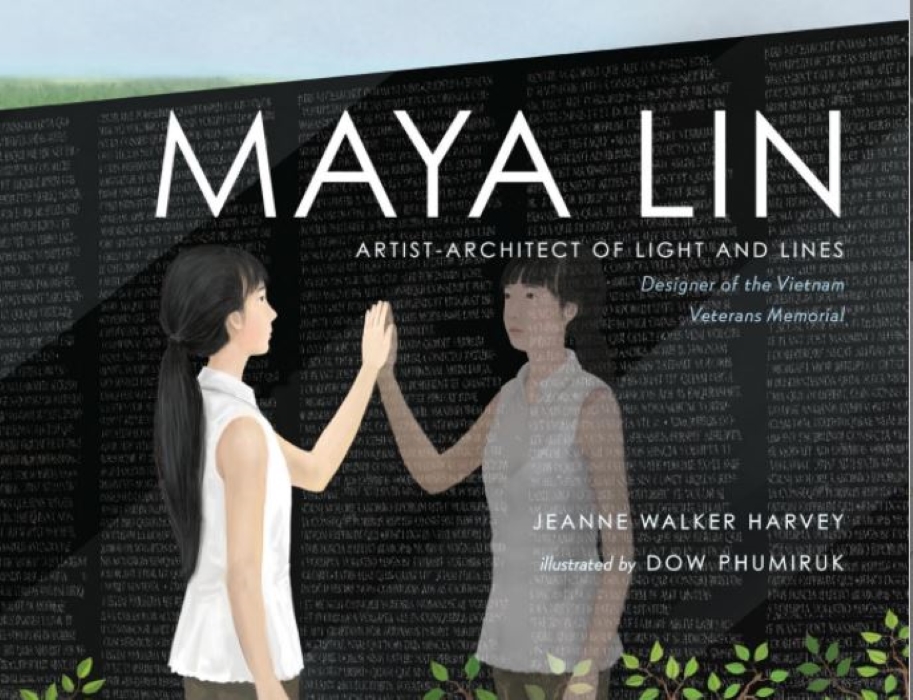
Maya Lin: Artist-Architect of Light and Lines
In celebration of Women’s History Month and in honor of National Vietnam War Veterans Day, Meagan McGowan, Digital Exhibitions Manager shares with us a timely recommendation for young readers. Meagan shares, “Maya Lin: Artist-Architect of Light and Lines,” is a beautifully illustrated children’s book for ages 4-8 which tells the inspiring story of Maya Lin, designer of the Vietnam Veterans Memorial in Washington D.C. In this book, we learn about Maya’s childhood – her connection to nature, her love of art and reading, and her desire to one day become an architect. Both children and adults will gain insight about what inspired the young artist’s design for the Vietnam Veterans Memorial and follow her journey from winning the design contest to seeing it through completion. Maya Lin’s contributions to Vietnam Veterans and their families is both everlasting and impactful. Her story, as told by Jeanne Walker Harvey and illustrated by Dow Phumiruk, makes for a truly motivational and meaningful read for students everywhere!”

They Fought For Each Other: The Triumph and Tragedy of the Hardest Hit Unit in Iraq
In our continued celebration of Women’s History Month, Brandon Turnau, Guest Experience Associate, recommends a powerful book written by U.S. Army Veteran, bestselling author, and award-winning journalist, Kelly Kennedy: “If you’re interested in reading about the bond that soldiers share and how camaraderie is found in the darkest of times, then look no further than Kelly Kennedy’s book, “They Fought For Each Other: The Triumph and Tragedy of the Hardest Hit Unit in Iraq.” Kennedy was embedded with Charlie Company 1-26, a United States Army unit. Her time with Charlie Company 1-26 lasted several months, but the experiences encountered undoubtedly will last a lifetime. The group would go on to be recognized as the hardest hit unit during the Iraq War. Many chronicles of heroism have been written about United States soldiers spanning a plethora of wars, but what makes this book standout is the depth with which these stories are told. Kennedy goes into heartbreaking detail as she digs into each individual soldier’s life story. While anguish and tragedy struck the unit on numerous occasions, true heroism and sacrifice are what rings most soundly from this work. This courageous company volunteered to serve their country with patriotic fervor and were willing to sacrifice everything for this nation and for each other. What makes this book such a good read is how powerful the themes of sacrifice and selflessness are displayed by ordinary people in impossible situations. Without a doubt, a must-read for anyone interested in personalized military stories, themes of brotherhood, and stories of true resilience.”
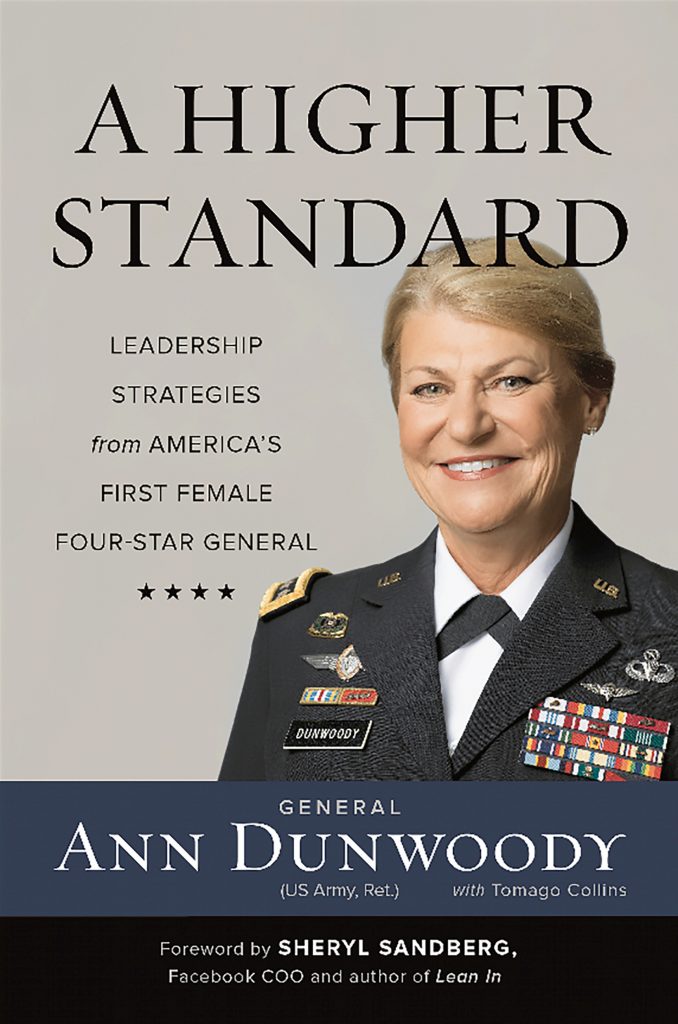
A Higher Standard: Leadership Strategies from America’s First Female Four-Star General
This week, Theresa Sanderell, Guest Experience Supervisor is reading, A Higher Standard: Leadership Strategies from America’s First Female Four-Star General by General Ann Dunwoody, U.S. Army (Retired). It’s a powerful read for those who are interested in learning more about women’s roles in leadership in the U.S. military. Theresa shares that she “first learned about General Dunwoody here at the NVMM and how it’s an honor to have her story featured on the Historic Timeline inside our Museum. In this book, General Dunwoody touches on a number of topics ranging from sage leadership advice to her own personal stories of military service and life.”

The Hello Girls: America’s First Women Soldiers
This week, our Digital Exhibitions Manager, Meagan McGowan, is reading The Hello Girls: America’s First Women Soldiers, written by Elizabeth Cobbs. Meagan shares, “If you’re like me, and you’ve spent much of your time reading about WWII through present day, this book offers an incredible opportunity to look back at the contributions of women during WWI. “The Hello Girls,” gives readers a glimpse into the life of American women during wartime and brings to light the challenges and adversity faced during the women’s suffrage movement. Immerse yourself in the captivating stories of the U.S. Army Signal Corps women — the integral roles they played and how they shaped the world for future generations to come.”
